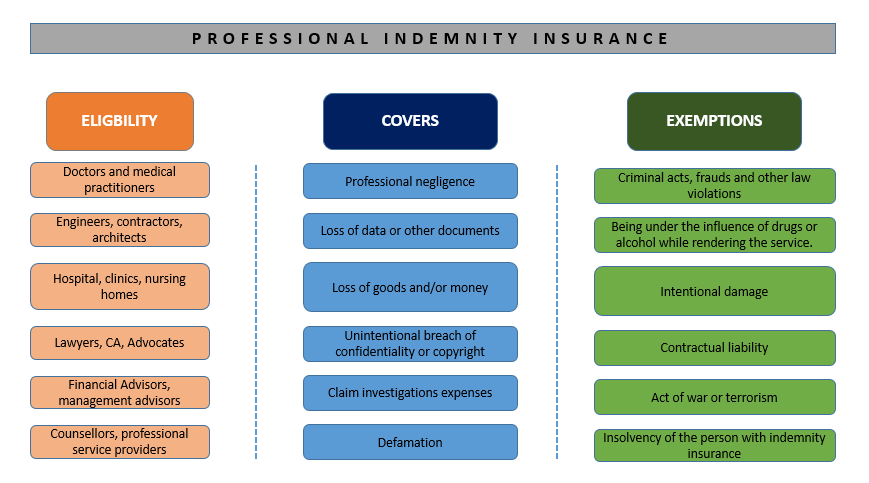What is Insurance Underwriter Job?
Underwriters in the insurance Industry assess and analyse the risks associated with insuring persons and assets. Insurance underwriters set the price for insurable risks that are accepted. Receiving compensation for the desire to pay a prospective risk is underwriting. Underwriters employ specialised algorithms and actuarial data to estimate the possibility and amount of a threat.
An insurance underwriter's job description covers a variety of duties, such as:
- Assessing the potential client's information (i.e., marital status, age, driving record, medical history, etc.)
- Employing underwriting software to determine a potential client's risk profile
- Choosing whether or not to provide Insurance Coverage to an individual
- Calculating the expenses of providing coverage and determining premium pricing
- Developing strategies to lessen the likelihood of future insurance claims being paid
- Evaluating actuarial tables, which are the data that actuaries supply
Importance of Underwriting in Insurance
In the Financial Sector, underwriting plays a significant role because it:
- Assesses the investment's or person's level of risk
- Establishes reasonable loan rates
- Determines the appropriate rates to cover the actual cost of insuring policyholders
- Ensures that correct assessment and coverage are carried out
- Assists investors in making informed Investing selections
Talk to our investment specialist
Types of Underwriting in Insurance
There are several forms of underwriting; however, the following are the most frequent.
Loan Underwriting
Underwriting a loan entails assessing and quantifying lending risks to prospective borrowers. Income, Credit Score, appraisal, and asset information are the four critical elements loan underwriters use to determine payback. Loan underwriting is frequently used to refer to a mortgage. If the borrower defaults on the loan, the underwriting procedure will evaluate if the property can be sold to recuperate its worth.
Insurance Underwriting
The process of examining a potential insurance applicant for various types of insurance is known as underwriting. It assesses the amount of coverage, how much to pay, and how much an insurance company is inclined to pay to cover the policyholder by determining the risks. The underwriting process for Life Insurance entails evaluating a potential insurer's risk by looking at their age, occupation, health, lifestyle, family medical history, hobbies, and other characteristics. Due to health considerations or pre-existing diseases, health insurance may have limitations. Other types of insurance define the extent of a policy by assessing the possibility of accidents, potential damage, environmental implications, and other factors.
Securities Underwriting
Instruments underwriting is used by investors and investment banks to determine how successful investments, such as stocks and debt securities, are expected. An investor discovers successful securities supplied by a firm attempting an Initial Public Offering (IPO) in securities underwriting. Underwriters who participate in this process can establish a syndicate, a group of underwriters that acquire securities to resell them. It's known as an "underwriting spread" when this group earns money from the differential. The underwriting process benefits both the potential investor and the underwriter because it determines whether the IPO business will be able to obtain the requisite cash, guaranteeing that the underwriters are compensated for their services.
Forensic Underwriting
Forensic underwriting is used when a borrower defaults on a loan. In this situation, the borrower will be re-evaluated to see if they qualify for a new loan or a refinance.
Insurance Underwriter Qualifications
A bachelor's degree is usually required to operate as an insurance underwriter, but appropriate coursework is beneficial. Here are some further requirements to be an insurance underwriter:
Education
Business, science, mathematics, finance, Accounting, Economics, probability and computer technology, statistics, and engineering are the best courses to study for insurance underwriters. Any degrees in these fields will be advantageous.
Training
Underwriters undergo considerable on-the-job training and coaching if hired straight out of college. To learn about rules, procedures, and strategies, underwriting trainees are usually paired with experienced underwriters.
Insurance underwriter Certification
Many employers encourage or demand this certification, which can be obtained by taking courses via several Institutes which specialise in insurance and risk management. The coursework and examinations for these credentials typically take 1-2 years to complete.
Insurance Underwriter Salary
Insurance underwriters with a lot of experience can make well into the six figures. In India, the average annual income for an Insurance Underwriter is Rs. 8,53,784.
Conclusion
Even though some of the jobs are automated and done by insurance technology, an insurance underwriter will be engaged with a potential customer if the risks or terms of the insurance policy alter. The underwriter will assess if the insurance company want to continue providing coverage or if new Insurance Terms will be established with the client. These professionals can use various information about a customer to determine whether or not the client should be granted insurance, depending on the type of insurance they work in.
All efforts have been made to ensure the information provided here is accurate. However, no guarantees are made regarding correctness of data. Please verify with scheme information document before making any investment.












